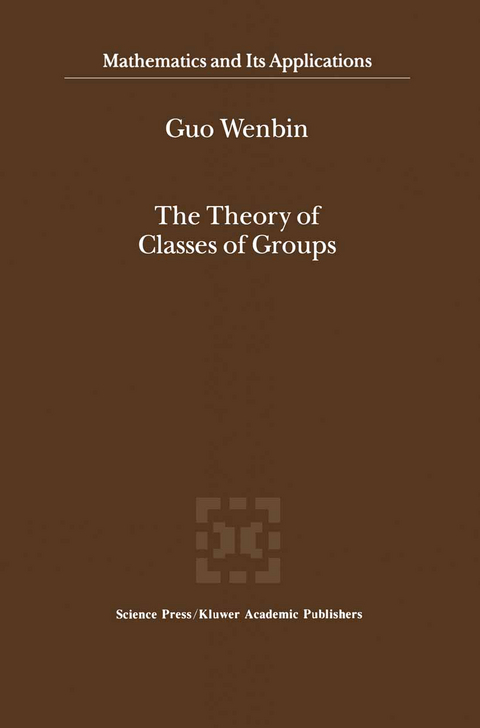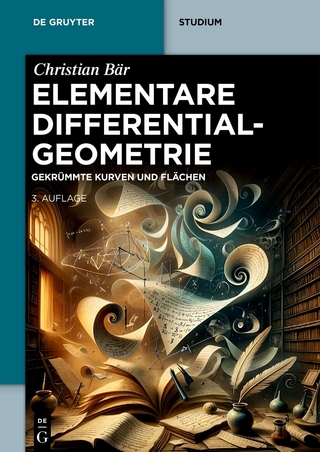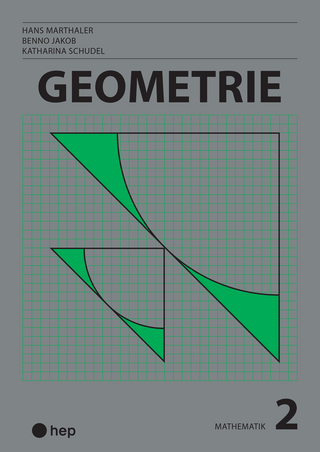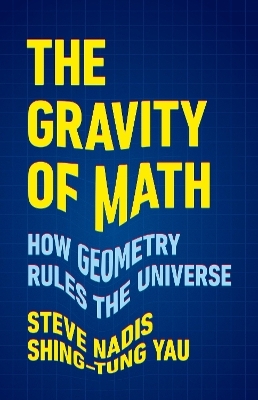
The Theory of Classes of Groups
Springer (Verlag)
978-0-7923-6268-5 (ISBN)
One of the characteristics of modern algebra is the development of new tools and concepts for exploring classes of algebraic systems, whereas the research on individual algebraic systems (e. g. , groups, rings, Lie algebras, etc. ) continues along traditional lines. The early work on classes of alge bras was concerned with showing that one class X of algebraic systems is actually contained in another class F. Modern research into the theory of classes was initiated in the 1930's by Birkhoff's work [1] on general varieties of algebras, and Neumann's work [1] on varieties of groups. A. I. Mal'cev made fundamental contributions to this modern development. ln his re ports [1, 3] of 1963 and 1966 to The Fourth All-Union Mathematics Con ference and to another international mathematics congress, striking the ories of classes of algebraic systems were presented. These were later included in his book [5]. International interest in the theory of formations of finite groups was aroused, and rapidly heated up, during this time, thanks to the work of Gaschiitz [8] in 1963, and the work of Carter and Hawkes [1] in 1967. The major topics considered were saturated formations, Fitting classes, and Schunck classes. A class of groups is called a formation if it is closed with respect to homomorphic images and subdirect products. A formation is called saturated provided that G E F whenever Gjip(G) E F.
1 Fundamentals of the Theory of Finite Groups.- §1.1 Basic Concepts.- §1.2 Homomorphism Theorems.- §1.3 Primary Groups.- §1.4 Sylow’s Theorems.- §1.5 Automorphism Groups and Semidirect Products.- §1.6 The Jordan-Hölder Theorem.- §1.7 Soluble Groups and ?-soluble Groups.- §1.8 Nilpotent Groups and ?-nilpotent Groups.- §1.9 Supersoluble Groups and ?-supersoluble Groups.- §1.10 Some Additional Information.- 2 Classical F-Subgroups.- §2.1 Operations on Classes of Finite Groups.- §2.2 X-covering Subgroups, X-projectors, X-injectors.- §2.3 Theorems about Existence of F-covering Subgroups and F-projectors.- §2.4 The conjugacy of F-covering Subgroups.- §2.5 The Existence amd Conjugacy of F-injectors.- §2.6 .F-normalizers.- §2.7 Some Additional Information.- 3 Formation Structures of Finite Groups.- §3.1 Methods of Constructing Local Formations.- §3.2 The Stability of Formations.- §3.3 On Complements of F-coradicals.- §3.4 Minimal Non-F-groups.- §3.5 Š-formations.- §3.6 Groups with Normalizers of Sylow Subgroups Belonging to a Given Formation.- §3.7 Groups with Normalizers of Sylow Subgroups Complemented.- §3.8 Groups with Normalizers of Sylow Subgroups Having Given Indices.- §3.9 Groups with Given Local Subgroups.- §3.10 F-subnormal Subgroups.- §3.11 Some Additional Information.- 4 Algebra of Formations.- §4.1 Free Groups and Varieties of Groups.- §4.2 Generated Formations.- §4.3 Critical Formations.- §4.4 Local Formations with Complemented Subformations.- §4.5 Some Additional Information.- 5 Supplementary Information on Algebra and Theory of Sets.- §5.1 Partially Ordered Sets and Lattices.- §5.2 Classical Algebras.- §5.3 Modules over Algebras.- Index of Subjects.- List of Symbols.
| Erscheint lt. Verlag | 31.1.2001 |
|---|---|
| Reihe/Serie | Mathematics and Its Applications ; 505 | Mathematics and Its Applications ; 505 |
| Zusatzinfo | XI, 258 p. |
| Verlagsort | Dordrecht |
| Sprache | englisch |
| Maße | 155 x 235 mm |
| Themenwelt | Mathematik / Informatik ► Mathematik ► Geometrie / Topologie |
| ISBN-10 | 0-7923-6268-3 / 0792362683 |
| ISBN-13 | 978-0-7923-6268-5 / 9780792362685 |
| Zustand | Neuware |
| Informationen gemäß Produktsicherheitsverordnung (GPSR) | |
| Haben Sie eine Frage zum Produkt? |
aus dem Bereich


